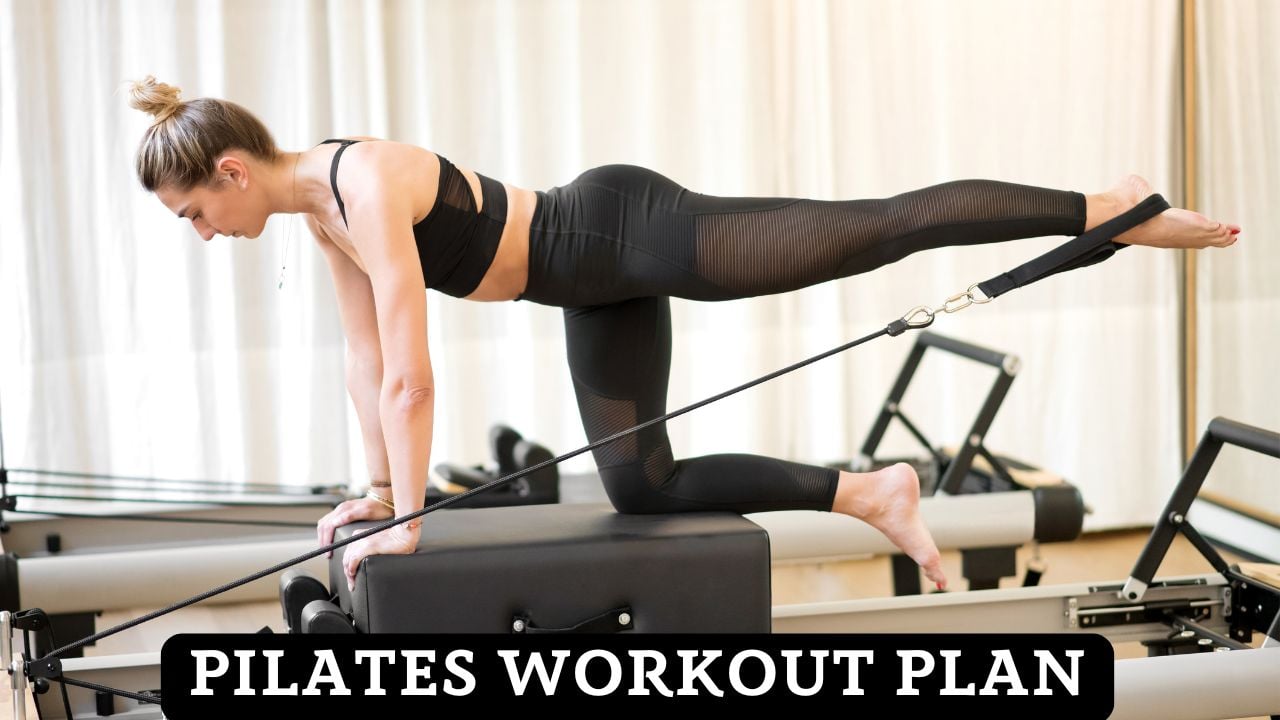Pilates Workout Planner
Create your personalized Pilates program with our AI-powered planner. Get tailored sequences that match your level, goals, and equipment preferences.

Customize Your Pilates Plan
Evidence-Based Pilates Workout Program
This comprehensive Pilates program is developed based on scientific research demonstrating the effectiveness of Pilates for improving physical and mental health. According to a systematic review published in the Bulletin of Faculty of Physical Therapy, Pilates exercise improves quality of life while reducing pain and disability. It also enhances flexibility, strength, mobility, respiratory function, and balance across multiple populations, particularly in women with health conditions.
The 8 Fundamental Principles of Pilates
Concentration
Full attention to each movement ensures proper execution and maximizes benefits.
Control
Every movement is performed with complete muscular control and precision.
Centering
All movements originate from the core, or “powerhouse” of the body.
Breath
Coordinated breathing patterns enhance movement efficiency and oxygenation.
Flow
Smooth, continuous movement patterns without jerky or segmented actions.
Precision
Attention to detail in alignment, form, and performance of each exercise.
Routine
Regular practice creates neuromuscular patterns and progressive adaptation.
Isolation
Focusing on specific muscle groups while maintaining whole-body awareness.
Research-Backed Benefits of Pilates
Musculoskeletal Health
According to Parveen et al. (2023), Pilates consistently demonstrates significant improvements in flexibility, strength, and mobility. Studies report increased range of motion in shoulder and hip joints, improved abdominal and core strength, and enhanced postural alignment. The controlled nature of Pilates movements helps to develop muscle strength without adding bulk, creating long, lean musculature.
Pain Reduction
Multiple systematic reviews, including research by Wells et al. (2013), confirm that Pilates is effective for reducing chronic low back pain, with benefits maintained at 6-month follow-up. The focus on core stability, neutral spine positioning, and controlled movement patterns contributes to these pain-relieving effects. Studies also show improvements in disability measures and functional capacity.
Cardiorespiratory Function
Research demonstrates that regular Pilates practice improves respiratory function by strengthening the diaphragm and accessory breathing muscles. A systematic review in the Bulletin of Faculty of Physical Therapy found increases in vital capacity and improvements in respiratory rate among participants, particularly in women with sedentary lifestyles. The emphasis on breath control contributes to these respiratory benefits.
Metabolic and Body Composition
Studies have shown that Pilates can positively impact metabolic health and body composition. Research cited in Parveen et al. (2023) found that Pilates interventions significantly lowered fasting blood glucose and HbA1c levels in women with type 2 diabetes. Additional benefits include improvements in body mass index (BMI) and body fat percentage with consistent practice.
Mental Wellbeing
According to research in the Journal of Bodywork and Movement Therapies, Pilates practice contributes to significant improvements in psychological wellbeing, quality of life, mood, and reductions in depression and anxiety levels. The mind-body connection fostered through Pilates promotes stress reduction and improved mental focus.
Balance and Proprioception
Scientific evidence demonstrates that Pilates training enhances balance, stability, and proprioception (body awareness in space). These improvements are particularly valuable for reducing fall risk in older adults and enhancing athletic performance in active individuals. The focused attention on alignment and controlled movement patterns contributes to these neuromuscular benefits.
Progressive 12-Week Pilates Program
This evidence-based workout program progressively builds on fundamental Pilates principles and exercises. Select your experience level to view the appropriate workout plan.
| Exercise Category | Specific Exercises | Sets/Reps | Focus | Frequency |
|---|---|---|---|---|
| Breathing & Core Awareness | Diaphragmatic breathing, Pelvic clocks, Imprinting | 2 sets, 10 reps | Foundation for all movement, establishing neutral spine | Every session |
| Basic Core Activation | Toe taps, Single leg stretch, Pelvic curls | 2 sets, 8-10 reps | Building core awareness and basic stability | 2-3x per week |
| Spinal Articulation | Cat-cow, Roll downs, Spine stretch forward | 2 sets, 5-8 reps | Segmental spinal movement and flexibility | 2x per week |
| Limb Integration | Modified hundred, Diamond press, Side leg lifts | 1-2 sets, 8 reps | Coordinating limb and core movement | 2x per week |
| Full Program Notes |
|
|||
Related
- Basketball Calories Burned Calculator
- Badminton Calories Burned Calculator
- Boxing Calories Burned Calculator
- Plank Calories Burned Calculator
- Burpee Calories Burned Calculator
- Crunches Calories Burned Calculator
- Sit-Up Calories Burned
- Zumba Calories Burned Calculator
- Pull Up Calories Burned Calculator
- Push-Up Calories Burned Calculator
- Home Activities Calories Burned Calculator
- Exercise Calories Burned Calculator
- Running Calorie Calculator
- Walking Calorie Burned Calculator
References
- Parveen, A., Kalra, S., & Jain, S. (2023). Effects of Pilates on health and well-being of women: A systematic review. Bulletin of Faculty of Physical Therapy, 28(1), 1-12. https://doi.org/10.1186/s43161-023-00128-9.
- Kloubec, J. (2011). Pilates: How does it work and who needs it? Muscles, Ligaments and Tendons Journal, 1(2), 61. https://pmc.ncbi.nlm.nih.gov/articles/PMC3666467/
- Li, F., Omar Dev, R. D., Soh, K. G., Wang, C., & Yuan, Y. (2024). Effects of Pilates on Body Posture: A Systematic Review. Archives of Rehabilitation Research and Clinical Translation, 6(3), 100345. https://doi.org/10.1016/j.arrct.2024.100345
- Li, F., Omar Dev, R.D., Soh, K.G. et al. Effects of Pilates exercises on spine deformities and posture: a systematic review. BMC Sports Sci Med Rehabil 16, 55 (2024). https://doi.org/10.1186/s13102-024-00843-3

Manish is a NASM-certified fitness and nutrition coach with over 10 years of experience in weight lifting and fat loss fitness coaching. He specializes in gym-based training and has a lot of knowledge about exercise, lifting technique, biomechanics, and more.
Through “Fit Life Regime,” he generously shares the insights he’s gained over a decade in the field. His goal is to equip others with the knowledge to start their own fitness journey.
